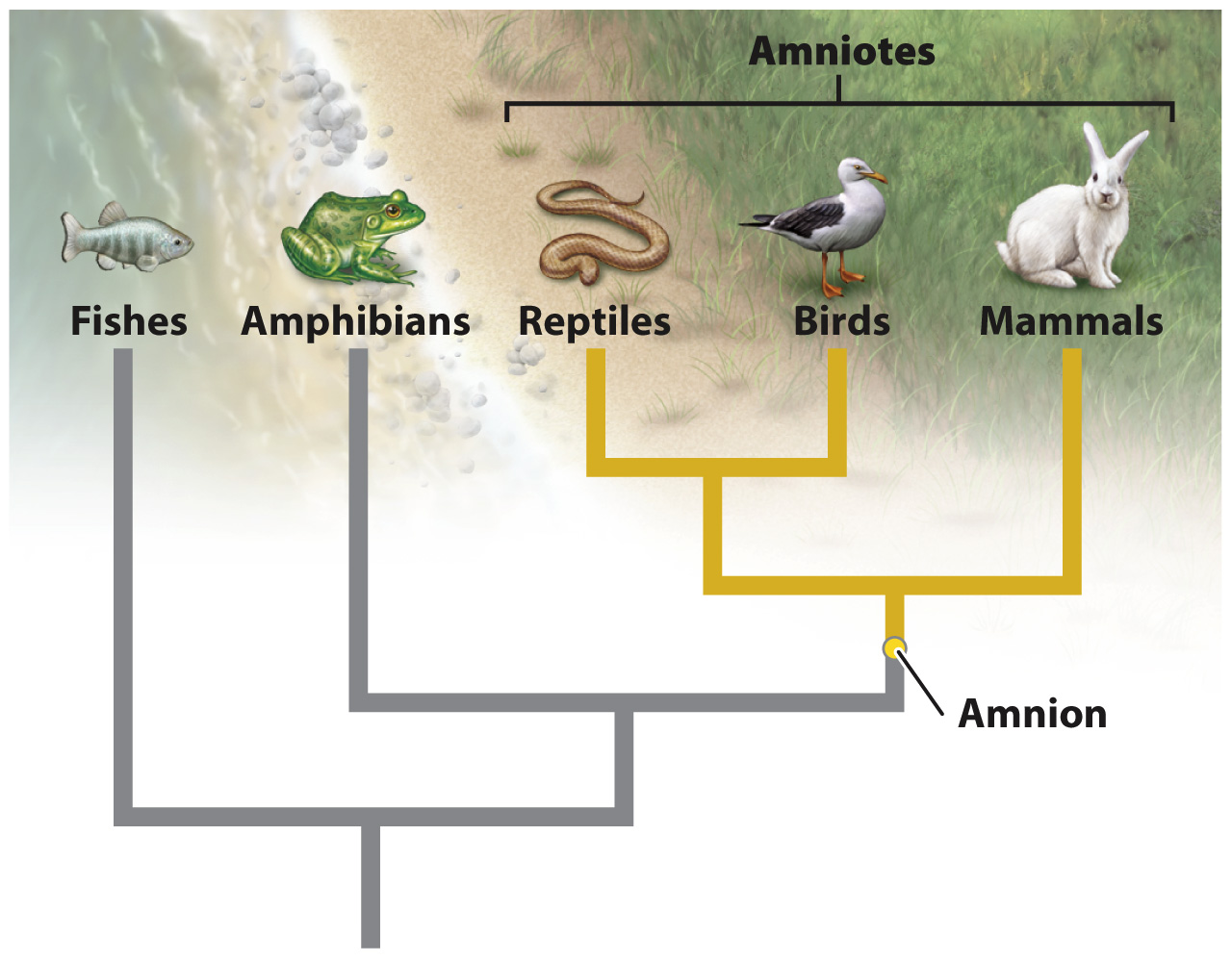Animals either lay eggs or give birth to live young.
When we speak of parental care, it is natural to think of parents tending the young. However, parental care actually begins much earlier in development, in the provisioning of nutrients for the developing embryo. The eggs of animals that are externally fertilized have a substance called yolk that provides all the nutrients that the developing embryo needs until it hatches. Water and oxygen are obtained directly from the aquatic environment and metabolic wastes easily diffuse out.
The movement onto land was associated with important changes in the anatomy of the egg. No longer could the developing embryo depend simply on diffusion of key substances into and out of a watery environment. A key innovation is the amnion, a membrane surrounding a fluid-


Animals that are internally fertilized can either lay eggs or give birth to live young. Animals that lay eggs are oviparous (oviparity means “egg birth”). Oviparity is used by most insects, fish, amphibians, and reptiles, as well as all birds. Even some mammals—
Other animals give birth to live young. These animals differ in where they get their nourishment during embryonic development. In some animals, embryos develop inside eggs that are retained inside the mother until they hatch. These embryos receive nutritional support from the yolk, not from the mother. Such animals are ovoviviparous (ovoviviparity means “egg live birth”). Some sharks and snakes are ovoviviparous.
In other animals, the embryo develops inside the mother and receives all its nourishment from the mother. These animals are viviparous (viviparity means “live birth”). Most mammals and some sharks and snakes are viviparous. In fact, viviparity has evolved many times independently. In placental mammals, such as humans, the chorion and allantois fuse to form the placenta, an organ that allows nutrients to be obtained directly from the mother.